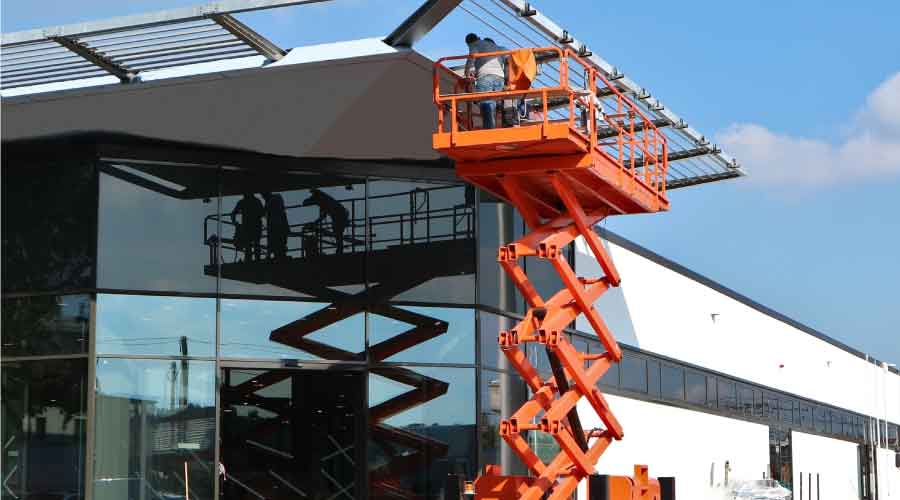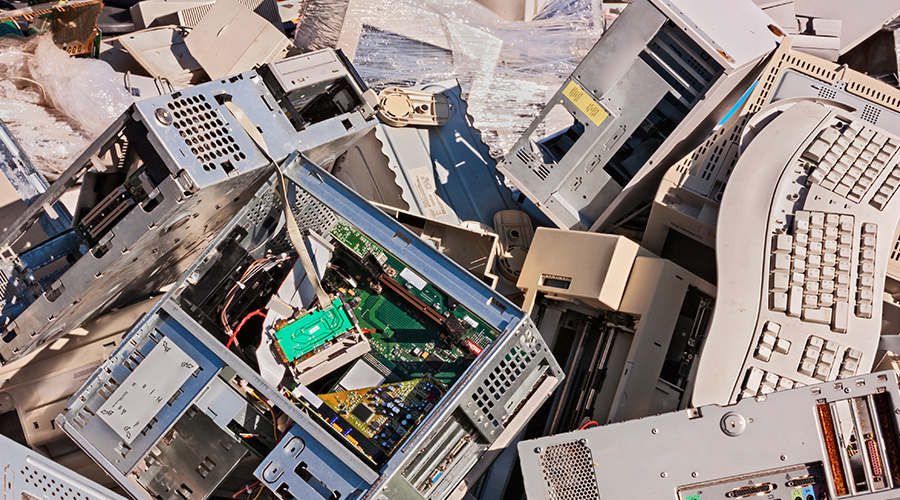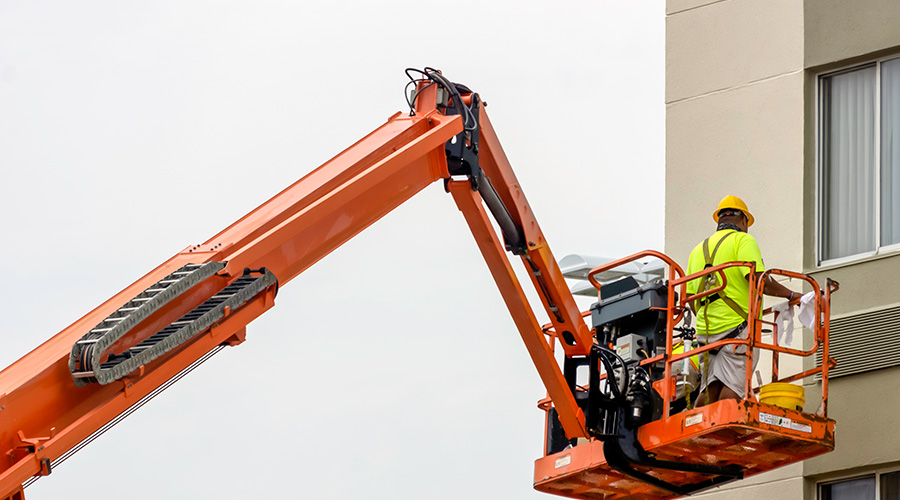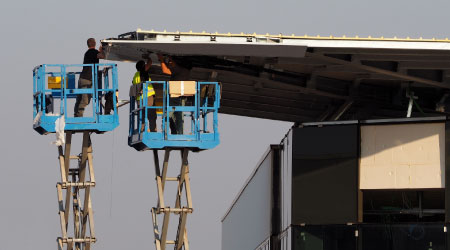Scissor Lifts Plays a Major Role in Maintenance Issues
Smaller in size and easier to move, low-level access machines can play major maintenance role.
Mobile elevated work platforms (MEWPs) can be big-ticket investments for maintenance and engineering managers. But they are also valuable workhorses for performing traditional tasks, such as replacing lamps and accessing hard-to-reach areas for cleaning or duct repairs in institutional and commercial facilities.
While many managers might opt to rent more powerful MEWPs that help technicians reach higher tasks that do not qualify as common maintenance, purchasing smaller push-around MEWPs or lifts, which go up as a scissor lift and not out like a telehandler, can prove a sound investment. Managers who are purchasing or renting push versions of MEWPs need to consider several factors, according to MEWP manufacturers and rental companies. These factors include access requirements, occupant and capacity requirements, applications (indoor or outdoor), power options (gas or electric) and safety.
The price range for aerial lifts varies based on size and type of machine. A manager’s decision to rent or purchase depends on facility needs and possible future growth.
Regardless of whether managers opt to rent or buy, the popularity of push-around MEWPs in maintenance applications has grown rapidly in the last couple of years, and they have become more widely adopted for applications that traditionally have used ladders or scaffolding.
Rent or buy?
When deciding whether to rent or buy MEWPs, one of the mistakes managers often make is only considering the upfront purchase price.
“Whether someone chooses to rent or buy a MEWP often depends on their use case and the frequency of operation,” says Austin Caskey, product line manager for Sunbelt Rentals. “Some major benefits of working with a reputable rental partner are their capability to inspect, service and certify each MEWP as safe.
“Some of the most significant costs associated with MEWPs come from moving and transporting them between jobs, plants or facilities. Besides the maintenance and certifications, there are also the costs associated with qualifying as a safe MEWP operation as defined by ANSI/SAIA. An example is the ongoing education each MEWP operator and each MEWP operator’s direct supervisor must have before operating the machines.”
The life cycle of a MEWP greatly depends on the tasks performed, work conditions and maintenance.
“While it depends on the type, we typically age out MEWPs around their seventh year of service,” Caskey says, adding that electric units can typically last longer than engine-powered combustion units.
Managers should consider key features and functions when choosing a MEWP, Caskey says. For example:
- Access requirements. “The potentially obvious question is, ‘How high do you need to go?’ But managers also have to consider if they need to reach out and any physical obstacles that might impede safe use,” Caskey says.
- Occupant and capacity requirements. Recent updates to ANSI/SAIA design standards intended to make MEWPs safer have made this a key consideration when renting or purchasing a boom lift. “You must have a good idea of the total weight on the platform, how many people you intend to lift and all the tools and supplies they need,” Caskey says.
- Indoor or outdoor applications. Newer scissor lifts have occupancy ratings for indoor and outdoor use, and boom lifts have a range of basket capacities. “Modern MEWPs are purpose-built to be used indoors, outdoors or both,” says Caskey. “You need to understand where it will be used.”
- Gas vs. electric. When making this decision, a key factor is understanding whether the equipment will be used indoors or outdoors. “Users will also need to consider what kind of access there will be to fuel sources for the MEWPs,” Caskey says.
- Safety considerations. Caskey says it’s paramount that MEWP operators understand and are confident in doing a pre-operation inspection before every use. “Any potential MEWP operator or supervisor, or others who regularly come in contact with MEWPs must be properly trained and aware of best safety practices,” he says.
Caskey says there is not one correct solution to a technician’s need to access or work at height.
“There’s almost always more than one machine and more than one way to do a job, but doing the job more safely and efficiently typically requires some initial expert guidance,” he says.
Howard Riell is a freelance writer from Henderson, Nevada.
Related Topics:













